Tianhetan: 'Bonsai of Guizhou's Mountains and Water'
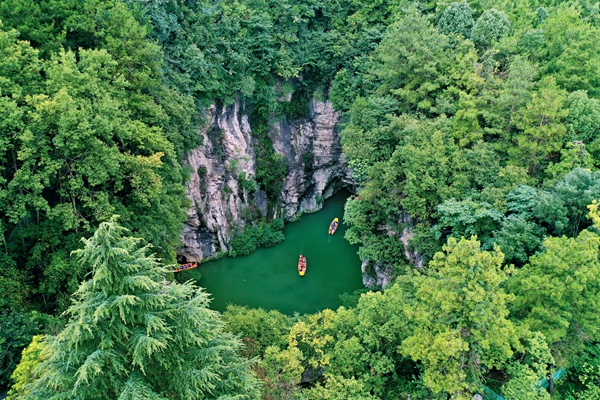
Tianhetan scenic area, in Guiyang, in Southwest China's Guizhou Province, is known for its karst landform and historical culture. Featuring rivers, lakes, mountains, waterfalls and karst caves, Tianhetan enjoys its reputation as the "bonsai of Guizhou's mountains and water."
Located in Shiban, a town in Guiyang's Huaxi District, Tianhetan is 24 kilometers from the city's downtown area. It covers more than 15 square kilometers. Ludi River, a tributary of Huaxi River, runs through the scenic area, at times underground. The best seasons to visit Tianhetan are spring, summer and autumn.
Since 1992, when Tianhetan tourist resort was established, it has attracted numerous tourists from the province, and from across the country. In 2008, Tianhetan became a national, 4A-level tourist resort. The resort provides a wide range of services, including cultural entertainment, catering and shopping, leisure activities, business conferences, folk-culture experiences and outdoor weddings.
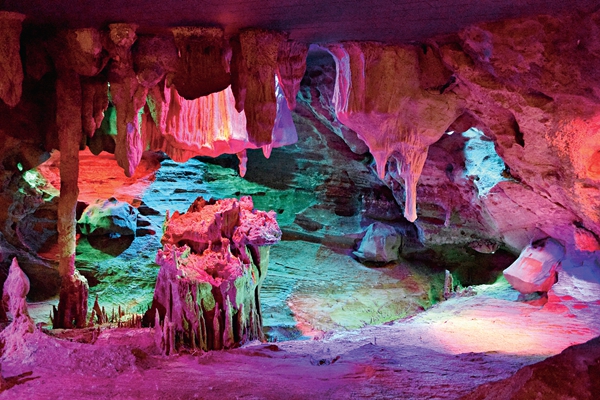
Tianhetan, literally meaning Tianhe Pool, is a perfect combination of mountains, water and caves. It was formerly called Tianshengqiao, or Tiansheng Bridge, because it has a large, naturally formed stone bridge.
A huge cavern, with a diameter of about 50 meters and a depth of 70 meters, is beside the bridge. At the bottom of the cavern is a pool of water, which is green and deep. That is Tianhe Pool. The scenic area was renamed after the pool.
At the bottom of the cliffs surrounding Tianhe Pool is Longtan Cave, which mainly consists of two karst caves — Kongling Cave and Galaxy Palace. The formation of the karst caves was the result of long-term groundwater dissolution in the limestone.
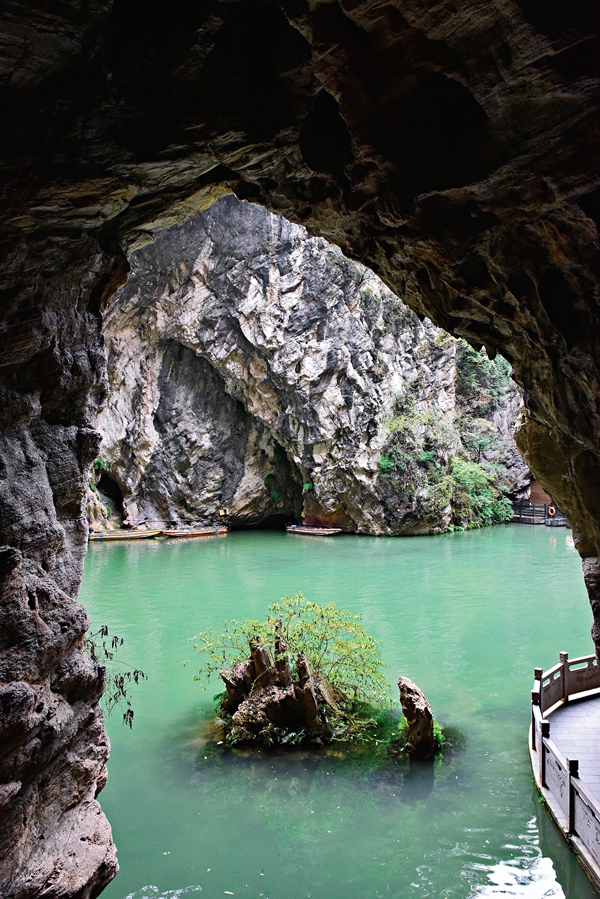
There are various shaped stone stalactites, stalagmites, stone columns and other karst landscape in the caves. Tourists always marvel at the masterpieces of nature when they travel through the fantastic underground world.
Kongling Cave is about 1,200 meters long, about 80 meters wide (at the widest point), and several meters wide at the narrowest point. Tourists can only travel in the cave by boat.
Galaxy Palace, with three layers, is about 2,000 meters long. Tourists can only walk through it. A natural stone bridge, Naihe Bridge, connects two cliffs in the cave. Under the bridge is a deep pool.
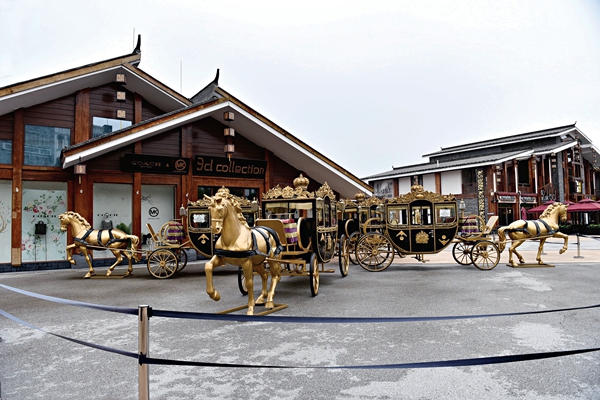
Wolong Waterfall, more than 20 meters wide and 10 meters high, is the biggest of the waterfalls in Tianhetan. The locals say Wolong Waterfall, together with the upstream Wolong Lake, is like a "water dragon" that blesses Tianhetan.
The river downstream of the waterfalls is called Xiangbagou. The waterfalls cascade down, zigzagging and flowing through the strangely shaped limestone caves that dot Xiangbagou.
Sun Square, at the entrance of the resort, has a strong taste of ethnic culture. In the middle of the square stands a building that resembles the pictograph of the Chinese character 篝 (bonfire). The building embodies different cultural elements of the Miao, Dong and Qiang ethnic groups.
The square's ground is decorated with patterns of auspicious cloud, which means good luck. Four beacon towers around the square are decorated with patterns of wind, fire, water and earth, respectively, and those decorations imply the harmonious coexistence between mankind and nature.
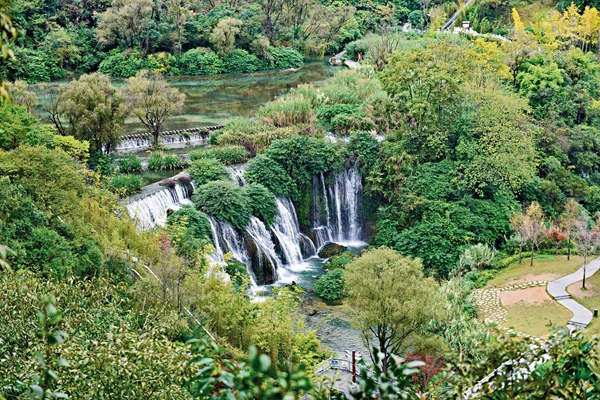
The waterside leisure area, as the core area of Tianhetan, has inns, restaurants, coffee shops and various stores, where tourists can find accommodations, go shopping and enjoy their leisure time. It is the best place to watch the fireworks and water-curtain laser shows.
The buildings on Guiyang Story Street were built based on the landmark buildings of old Guiyang during the early and middle 20th century. Strolling along the street, tourists will gain a better understanding of the local civil culture.
Mengcao Garden, situated on a mountain in the scenic area, is the former residence of Wu Zhongfan (1618-1695), a native of Guiyang and a famous poet during the late Ming (1368-1644) and early Qing (1616-1911) dynasties. Wu, who marveled at the picturesque views of Tianhetan, wrote eight poems about the area. Wu's poems are an important part of Guiyang's cultural heritage.
This year marks the 30th anniversary of the establishment of Tianhetan tourist resort. The resort organized an online activity, My Memory of Tianhetan, to collect old photos and items about Tianhetan, and to collect tourists' interesting stories about Tianhetan. More than 1,200 people participated in the activity and submitted their photos, items or stories. Some were displayed during an exhibition at the resort.
Photos Supplied by Zhang Jiamin and VCG
(Women of China English Monthly September 2022 issue)
Please understand that womenofchina.cn,a non-profit, information-communication website, cannot reach every writer before using articles and images. For copyright issues, please contact us by emailing: website@womenofchina.cn. The articles published and opinions expressed on this website represent the opinions of writers and are not necessarily shared by womenofchina.cn.


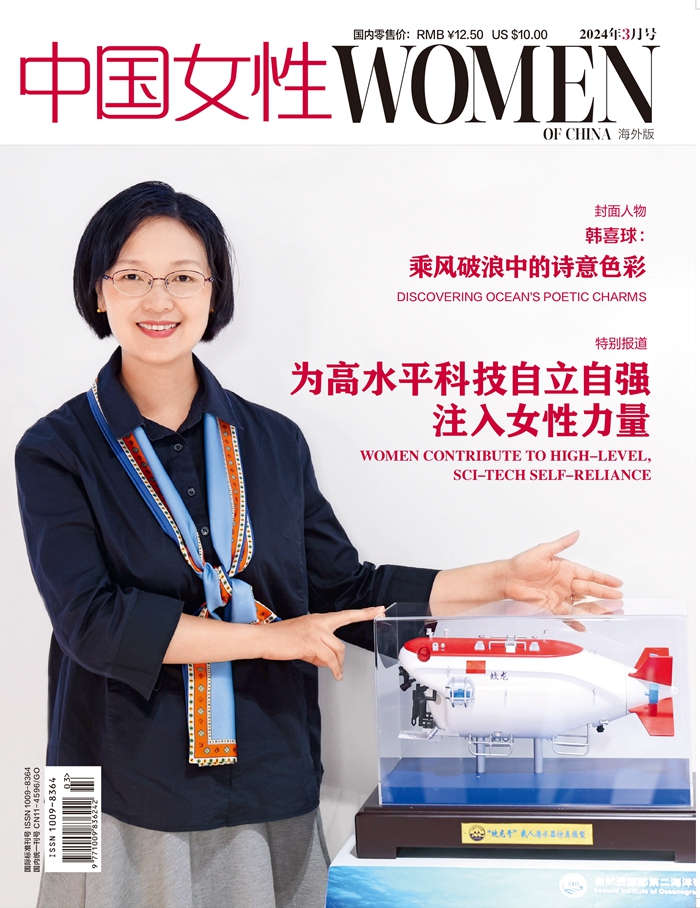
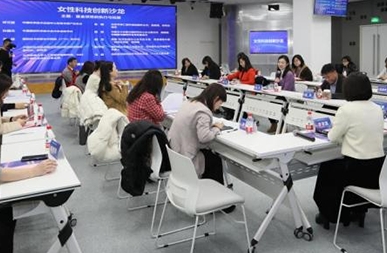
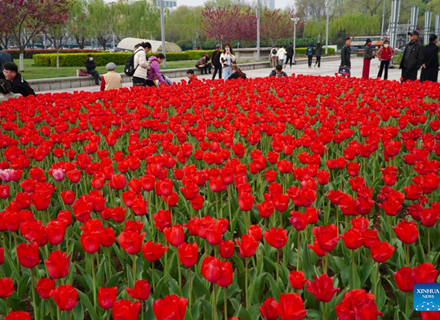
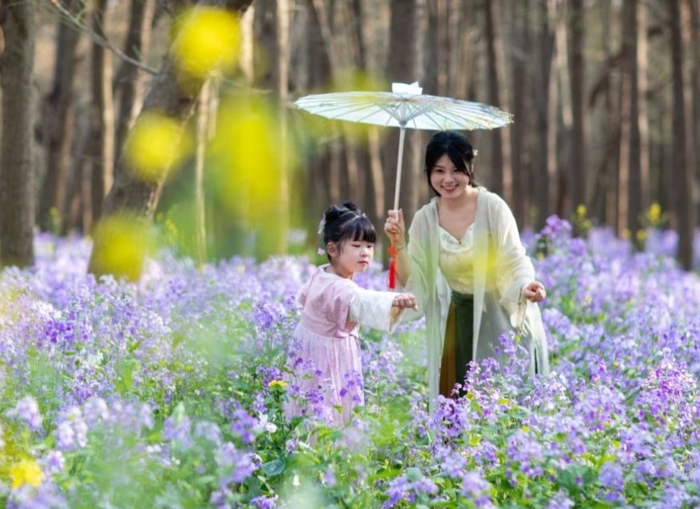


 WeChat
WeChat Weibo
Weibo 京公网安备 11010102004314号
京公网安备 11010102004314号